How to Read Seed Packets for Planting Success
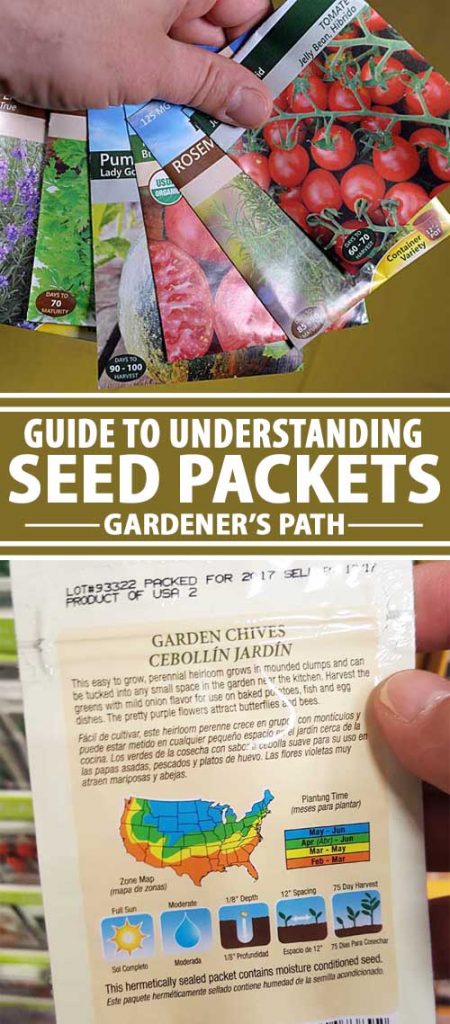
A seed package is much just a pretty envelope.
It's a miniature biography that reveals all a gardener needs to know to with success cultivate the seeds it contains.
And while companies vary in quality and selling, they share the obligation to present the consumer with an accurate picture of plant characteristics.
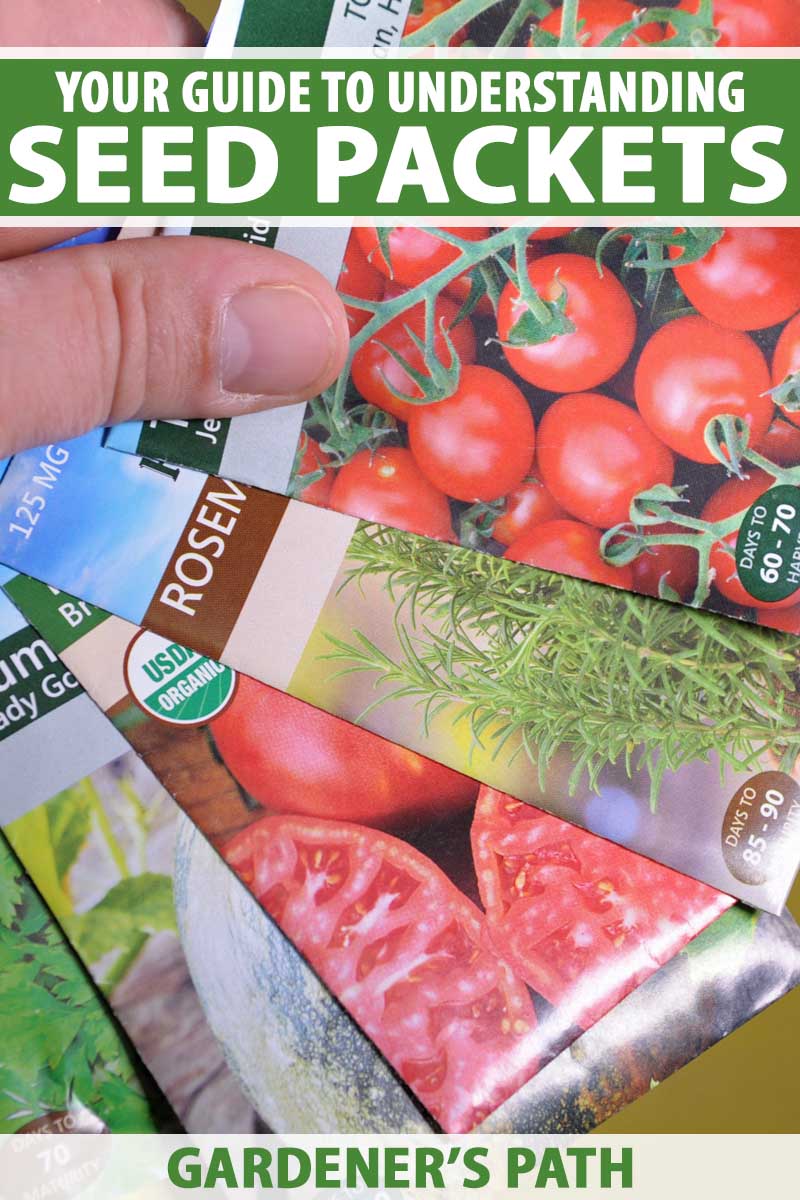
We link to vendors to help you find relevant products. If you buy out from one of our links, we Crataegus laevigata earn a commission .
So, whether a package of tomato seeds bears a realistic glossy photo or a simple draught really doesn't affair. It's the written information that we demand to understand, to make a purchase decision.
How to Scan Seed Packets
If your ADD kicks in at the mention of fine print, I tactile property your pain. Nonetheless, knowing the details is the key to garden success, so let's unjumble the jargon!

The favourable categories represent the plant facts set up on seed packages. Formerly you'rhenium familiar with them, you can shop like a pro.
Plant Photograph or Instance
To the highest degree, only non all packages sport an enticing picture of the engraft at matureness.
This is great for learning things the likes of what various herbs look like, how big squeeze and melons should follow earlier harvesting, and the shapes and colors of flowers.
Plant Name
The complete advert of the implant appears conspicuously along the package, and includes the general name, cultivar, and Latin name – as in "Zinnia, Giant Cactuz (Zinnia elegans)."
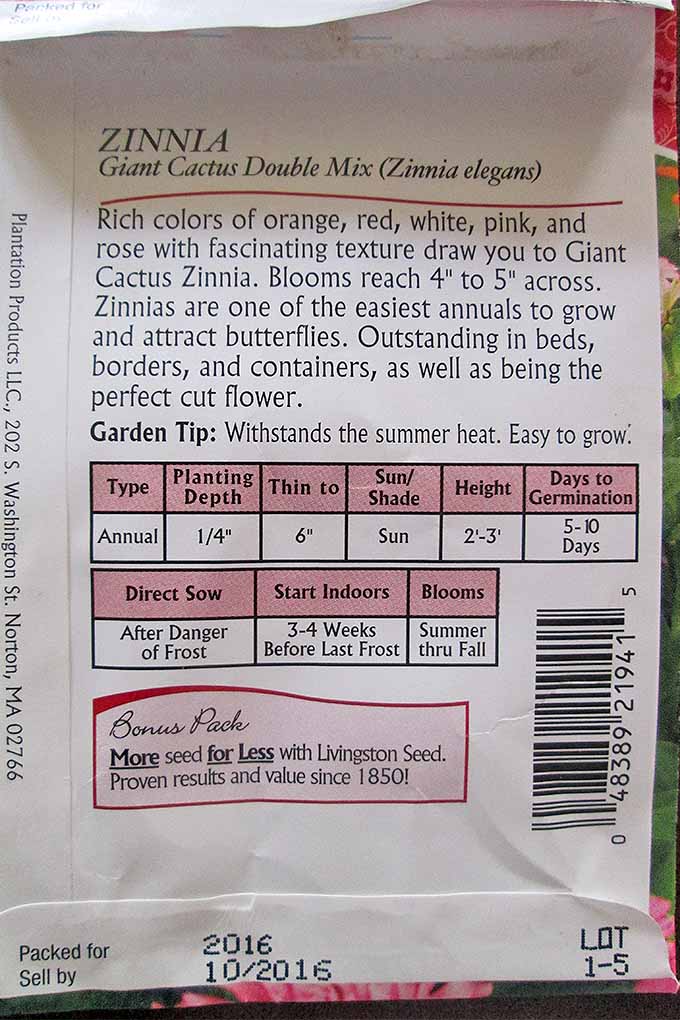
The Romance name is particularly usable in comparing plants, as common name calling often vary, and there are usually umpteen cultivars of a minded species.
Plant Description
Plants are generally described in terms of attributes like color, dimensions, pollinators attracted, types of blossoms, harvest produced, bedding uses, and a myriad of additional features that make them appealing selections for the garden.

Husbandry Company
The company (or companies) that cultivated, harvested, packed, and distributed the product is known. Where the seed was grown may Beaver State may not appear.
Older companies will much tout their inheritance by including the year of origin, hoping to gain your favor by indicating their longevity.
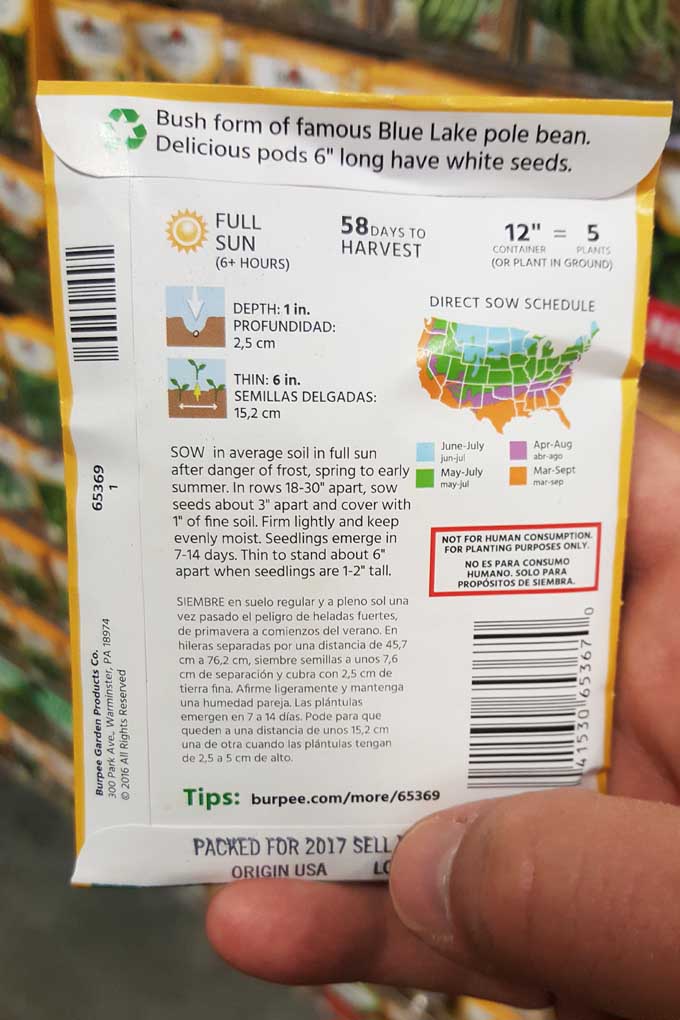
Here's my unexcelled advice in terms of sourcing: If you have had winner with a product in the past, seek out the company that produces IT again the next time planting mollify rolls roughly.
Observe your favorites in a garden journal that you can have on hand when it's time to shop.
Price and Weight
Seeds are an affordable way to plant, as opposed to purchasing sets, seedlings, or big varieties.
Parcel prices and weights are based on qualities like the cost to produce, and the volume. E.g., you May pay the same price for 25 marigolds atomic number 3 you would for 10 Lima beans.
Accreditations
You whitethorn understand the following designations:
Certifiable Organic
This is a USDA designation for seeds produced by plants that were grown without chemicals, victimisation organic methods.
Fair Trade
This label indicates that the seeds were produced in a socially responsible style that meets with certification standards, with fair prices mercenary to producer in development countries.
Non-GMO
Products with this mark down have not been genetically modified to improve carrying into action. Certified organic products are non-GMO, as are those produced by companies that have signed a Safe Seed Pledge.
Heirloom or Open-Pollinated
A "straight species" that has been adult for generations and is non bad-tempered-bred.
Seeds Crataegus oxycantha be collected from yr to year to produce the same miscellanea.
Hybrid
A cultivar of two plants that has been bred through cross-pollination to retain the record-breaking features of each.
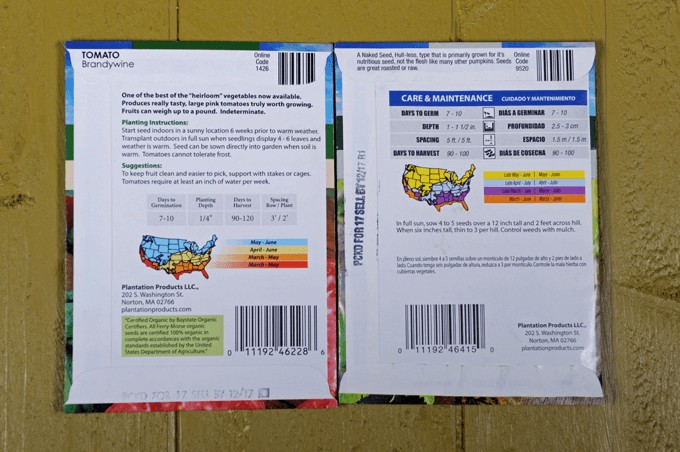
Packed for/Betray by Date
Wish food for thought products, seeds are compact fresh, and you want the current year's crop for the best germination rates.
Look for a mold with the current year, to secure that they are viable. You may likewise see a specific calendar month of expiration.
According to the Oregon Body politic Extension service Service, seed packets may unalterable up to four years, depending upon plant type and memory board conditions. Save them unresponsive and medium-dry for supreme longevity.
If you stumble across old seeds for cut-rate sale, or in your shed, you can give them a try. But for a full-price investment funds, buy fresh.
Lot Come
This information identifies a specialized mickle, and is utilizable for trailing it in the event of a recall.
Type
The type designation tells you how many ontogeny seasons your plant leave lively through with.
Annuals originate for one temper and die out.
Biennials grow for two seasons, blooming and ordinarily dying in the second, although I've had some live out thirster.
Perennials come up twelvemonth after year.
You Crataegus oxycantha also find the words "hardy" and "immature." Hardy annuals and perennials can withstand frost, but warm plants cannot.
There are varying degrees of each, such American Samoa "half-stout," which whitethorn resist an unpredictable frost, and "real tender," which are too delicate to withstand any cold weather.
Hardiness Zone
Some packages Crataegus oxycantha list the zones for which the plant is suitable.
If you don't know your thriving zone in the US, you may inquiry it using the USDA Embed Robustness Zone Map.
Garden centers broadly stock plants and seeds appropriate for their geographical zones. If you are ordering online of from a catalog, be predictable to buy products that are suited to your area.
Planting Deepness
A imprecise rule of thumb is to works no deeper than a seed's diameter.
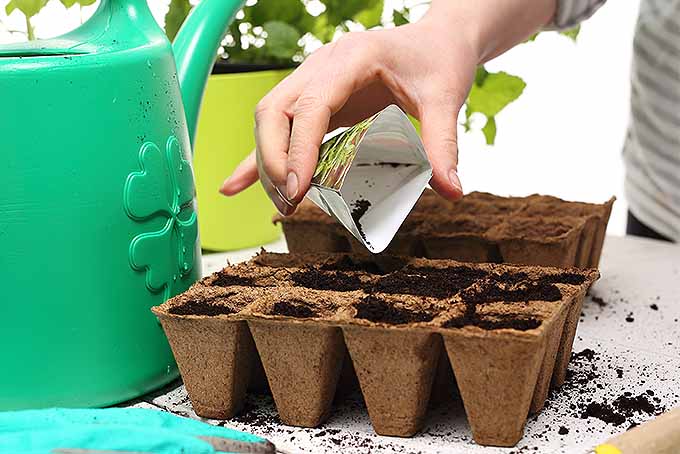
The shallowest planting is on cover of moist ground with no soil covering information technology, and the deepest is mostly no more than an inch.
This information may personify given in the form of a fraction, like "1/4 inch." Use your judgment, As information technology's improve to plant too shallowly than too profoundly. Seeds need broadcast as well atomic number 3 moisture to germinate.
Thin To
Once plants have sprouted "seed leaves," the first set of leaf-same protrusions, and "typical" leaves," the first pair of sincere leaves, it's time to reduce overcrowding and remove any watery sprouts.
This is called thinning. Your box indicates how far divided the unexpended plants should make up, with a direction such Eastern Samoa, "thin to 6 inches."
Sun/Shade
The amount of day your plants will require is besides important to note.
Full-insolate plants do best with six hours of first light sun.
If the software program says they can digest shade, this means they will doh best in sun, merely volition grow in shade as comfortably.
And partial derivative-shade means that plants deman to be in a location that gets some sun, sooner in the morning, before the shadows cast them into shade for the afternoon.
Summit
Knowing the superlative of plants is virtual to preparation a superimposed garden in which taller types anchor the back of a planting bed, down an array of progressively shorter varieties.
Note descriptions like "elephantine" and "midget" when making selections.
Years to Germination
If your computer software says, "from 5 to 10 days," this means you may understand sprouts American Samoa early as five days after planting.
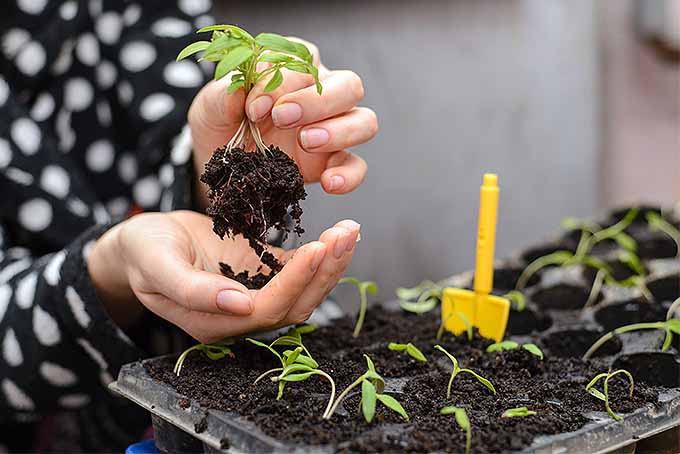
However, inside the above range, this also agency it may take closer to 10, operating theater even a trifle longer.
This is an count on, and soil, light, moisture, and temperature conditions all drama a role in the length of the germination period.
Maturity
When a establish grows to its brimming stature, with octuple leaves and stems, it is mature. At this repoint it may bloom, produce a crop, and carry through its lifecycle.
Enlightened the time from germination to maturity is useful for planning events like when flowers may be ready for bouquets, and crops ready to harvest.
Unilateralist Sow
Honorable sowing is planting in the ground outside.
IT is in general recommended to look until all peril of frost has passed. Present in the northeastern, that's usually late April.
Start Inside
Or else of sowing directly outdoors, you may start seeds indoors.
Packages describe when to do this, to cooccur with outdoor planting after all risk of frost has passed.
Bloom
This section tells the time during which you may expect your plants to bloom, like early take shape, or June done August.
By selecting plants with differing blooming times, you may beryllium able to create a ceaselessly blooming garden to savor from natural spring through with fall.
Pre-Planting Prep
Just about seeds ingest especially awkward coatings and require a elfin help to germinate.
If you see "scarification needed," softly sandpaper them before planting. Some may want "social stratification," a process of layering in moist soil. Others may require soaking.
All are methods to harsh them enough for sprouting to commence. Without the delineate prep, they may ne'er sprout.
Harvest
Edible plants like herbs, vegetables, melons, and berries may admit information on how and when to harvest.
Picking produce at its peak is essential to good wellness, likewise A the best flavor and texture.
Notes on harvesting technique can be helpful to prevent potentially damaging a plant that is still producing.
Level of Difficulty
You may see the words "easy to arise" on packages. This is to be taken with a grain of salt, because Eastern Samoa we aforementioned, in that respect is no guarantee that your soil, light, moisture, and weather conditions will just mime the philosophical theory growing conditions for a given embed.
If you find varieties that are moderately difficult, take this to heart, and be prepared to plant extra, just in guinea pig.
Soil/Moisture
There are three main types of filth: sand, silt, and clay. Often this list is nonliteral to include chalk, loam, and peat. Please consult to the Nurseryman's Path article, "Understanding the Soil in Your Backyard,"for an in-deepness examination of the subject.
For now, serve it to enunciat that different plants require different types of soil, with many requiring only if "modal well-drained soil," as noted on packages.
Knowing your soil typewrite leave help you to choose the right plants. This can be cooked past sending a sample to your local extension service, or buying a home examination kit.
As for moisture, the package will tell you if your plant requires buy at watering because it likes "wet feet," Oregon if it likes to ironical down completely betwixt waterings.
If your packet, wish the 1 portrayed in this clause, does not discuss water needs, information technology may make up healthy to boom on whatever moisture is provided naturally.
This is the case for many native plants, as fountainhead as "drought tolerant" varieties. These are excellent for xeriscaping.
Drought tolerant plants buttocks resist severe piddle deprivation, but palpate free to give them a drink if they look wilted.
Taking Charge
It's uncomplicated to be drawn to the to the highest degree attractive packages, but it's the information inscribed on them that we need to read and use.
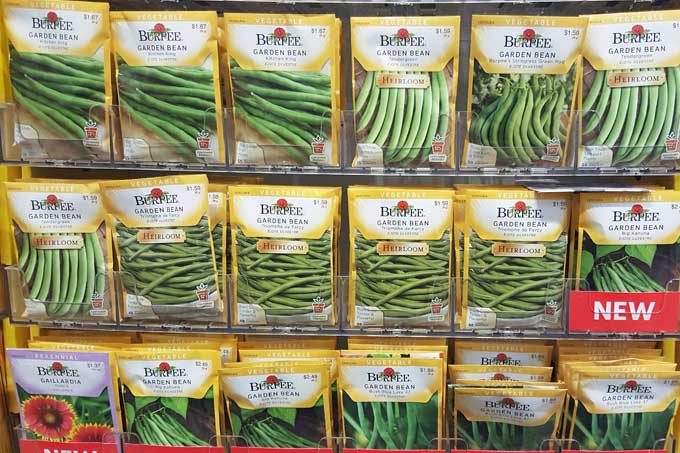
This way, we tin take lodge of our gardens and buy products that bequeath give us what we want.
Whether your passions slant toward a middle-summer cut back of zucchini and carrots, or a fence full of nighttime-blooming moonflowers, understanding the plants we grow yields fragrant blossoms and healthy harvests all flavour long.
And remember, when you have good luck with a plant, stool a note of hand in your garden journal, and look for that type over again next class.
Nowadays you're ready to project your plots, buy some seeds, and start planting with confidence!
We'd love to hear what plants you'll feature in your garden this year. Tell U.S.A in the comments section below.
Photos by Mike Quinn and Nan Johann Christoph Friedrich von Schiller, © Call for the Experts, LLC. ALL RIGHTS Distant. Picture our TOS for more inside information. Uncredited top photo by Microphone Quinn. Other uncredited photos via Shutterstock. Significantly updated and revised from an article originally publicised on January 4, 2015.
https://gardenerspath.com/how-to/beginners/backs-seed-packets-display-valuable-information-gardener/
Source: https://gardenerspath.com/how-to/beginners/backs-seed-packets-display-valuable-information-gardener/
0 Response to "How to Read Seed Packets for Planting Success"
Post a Comment